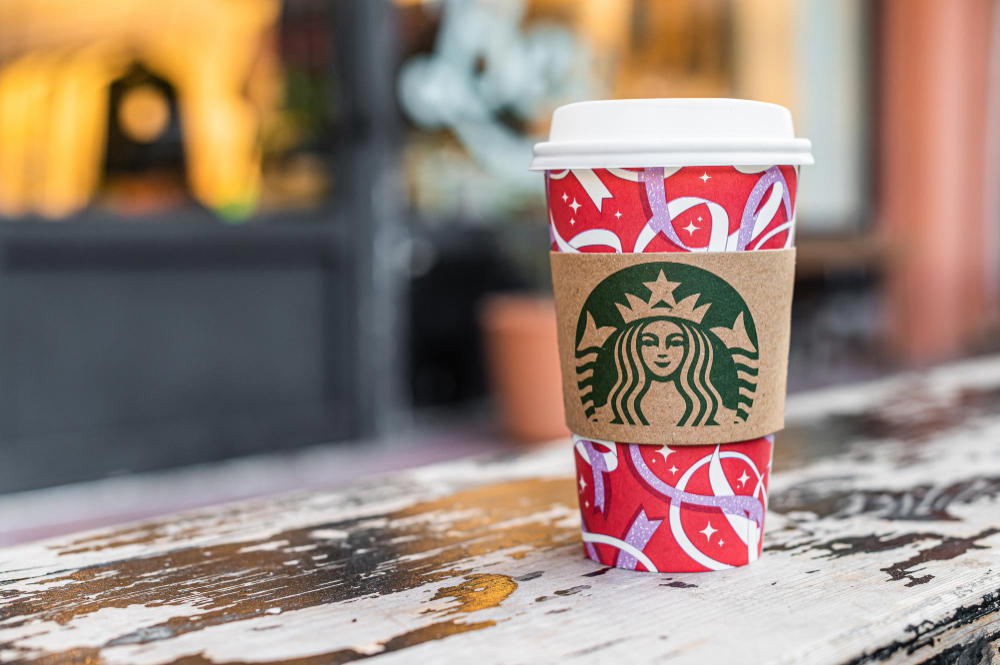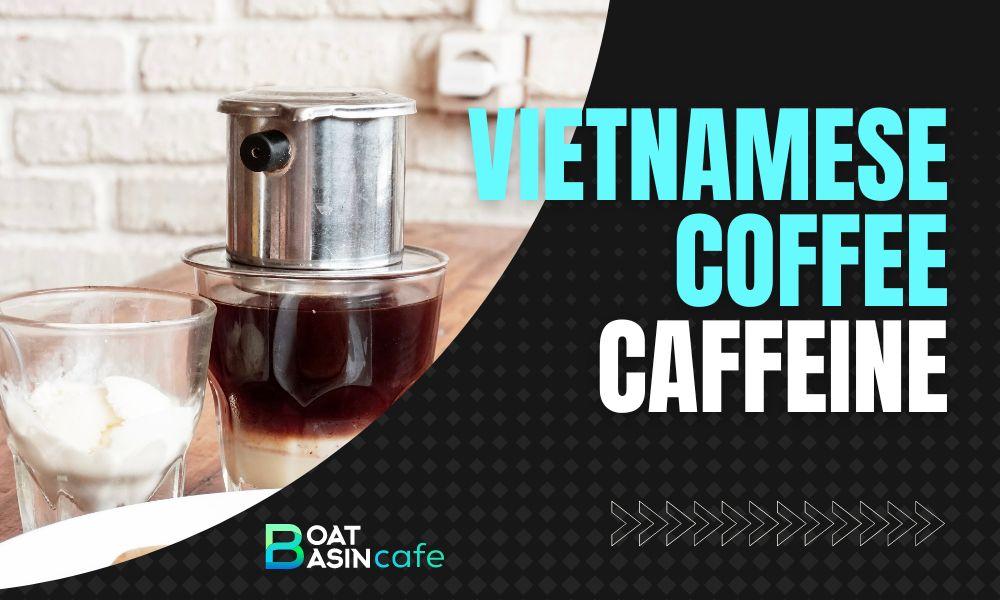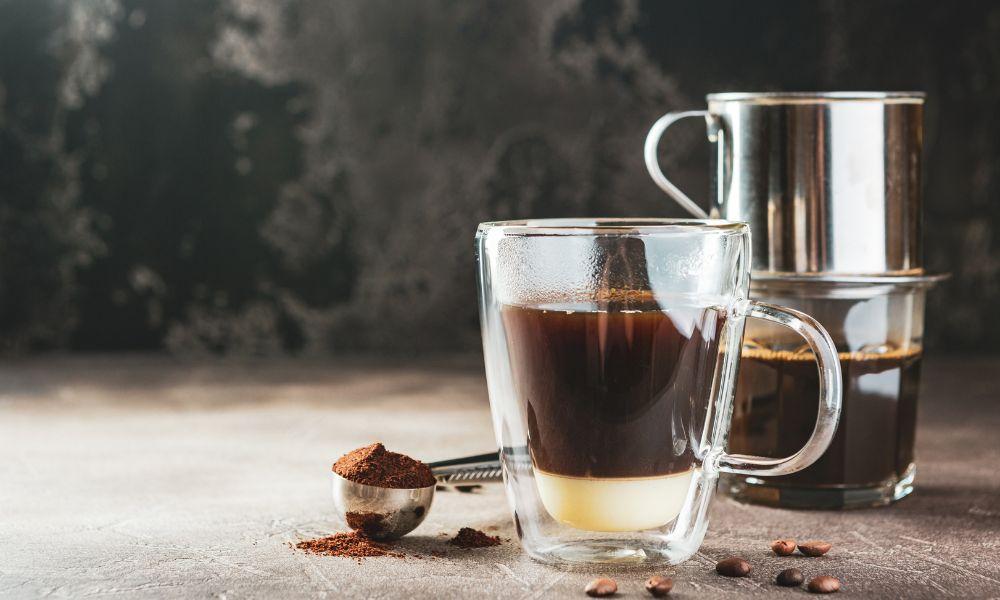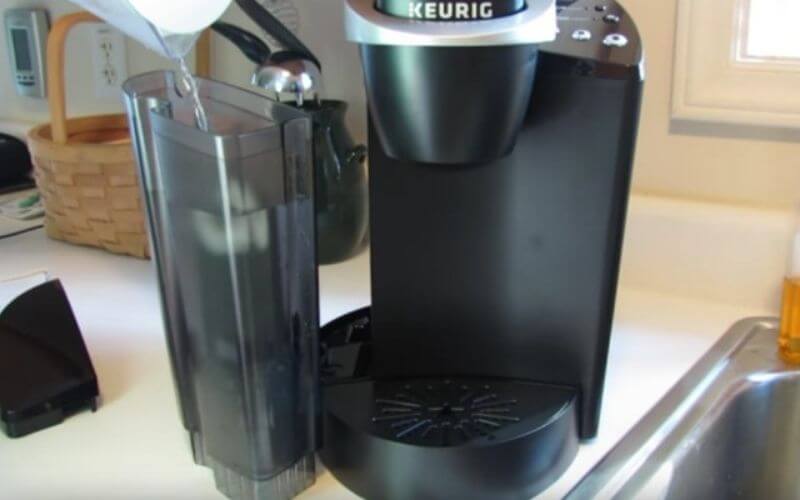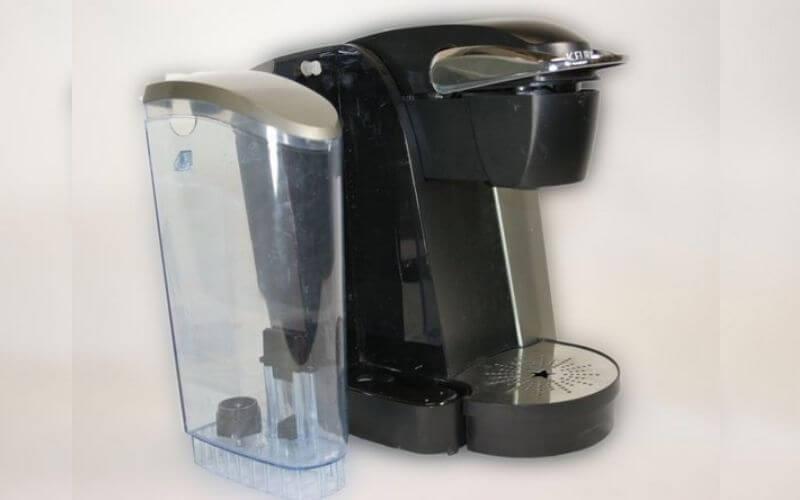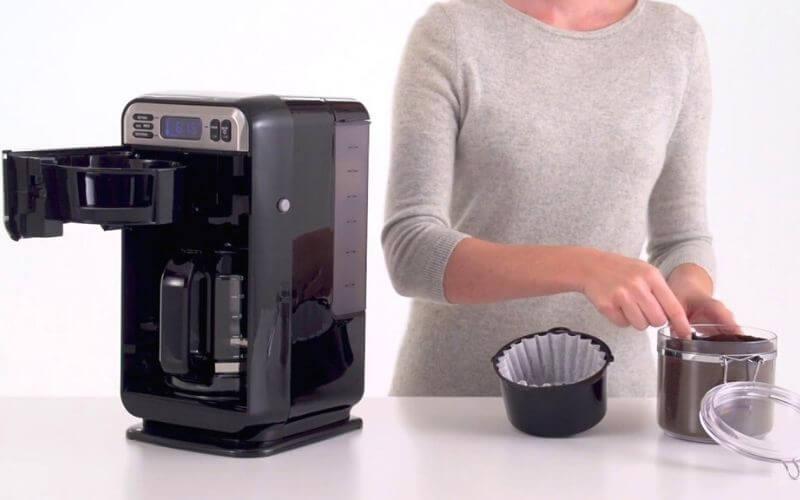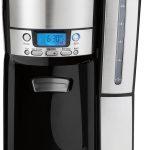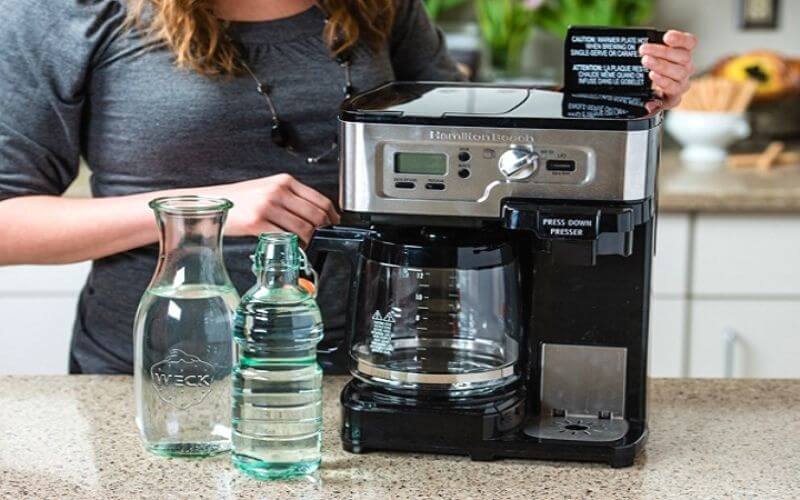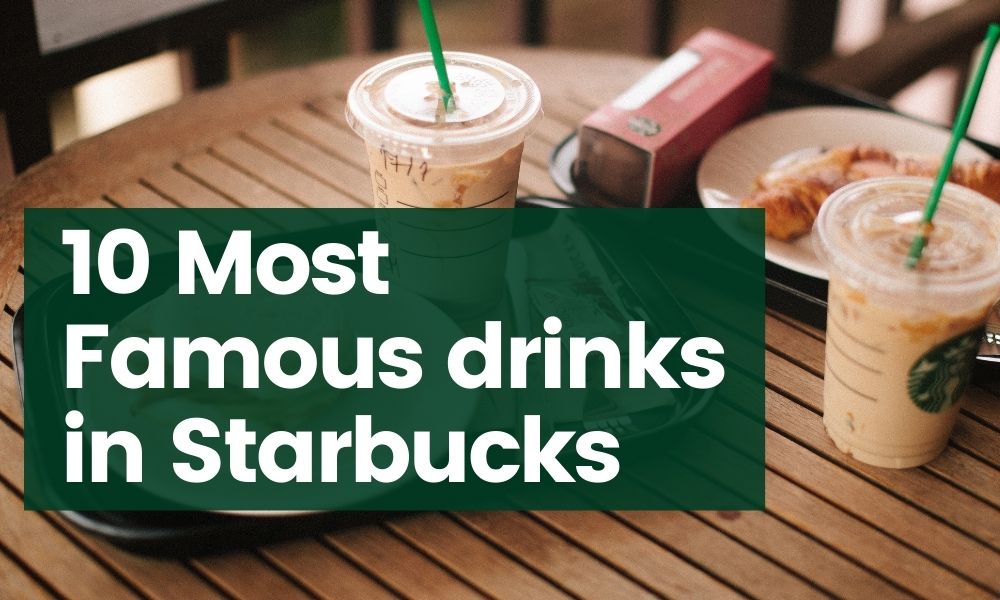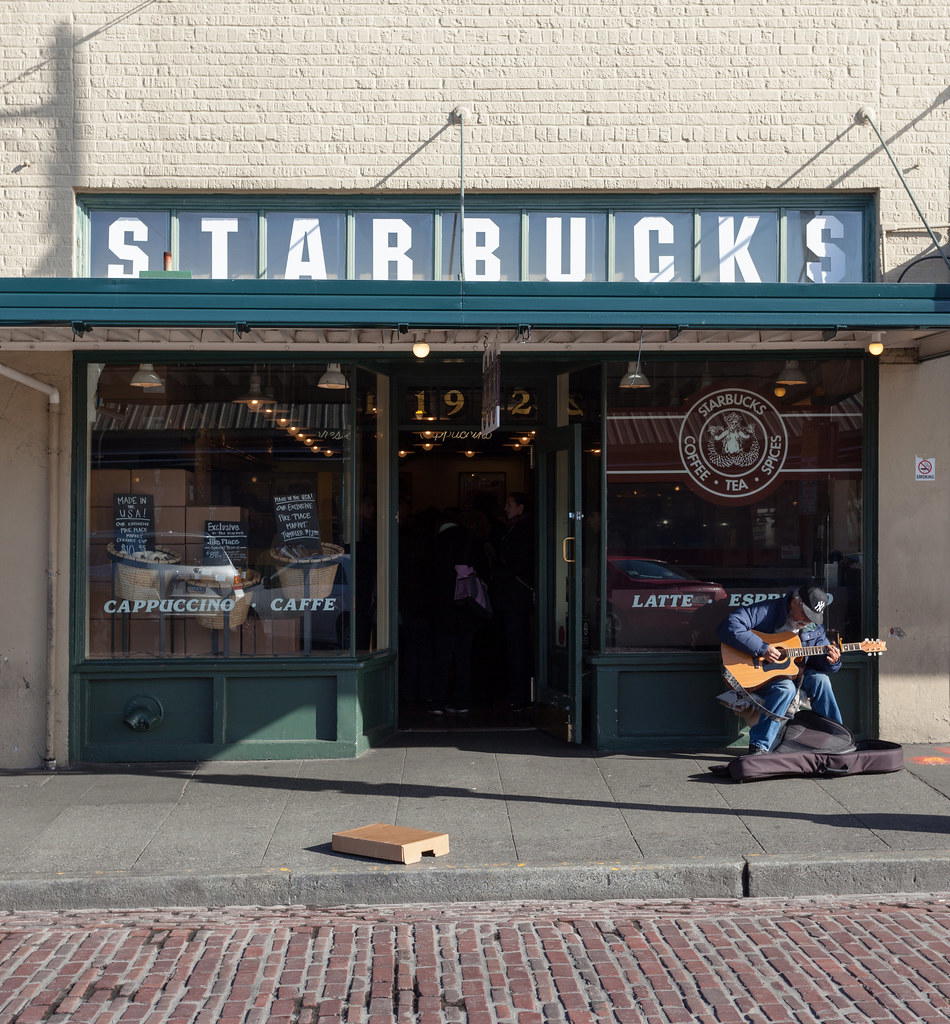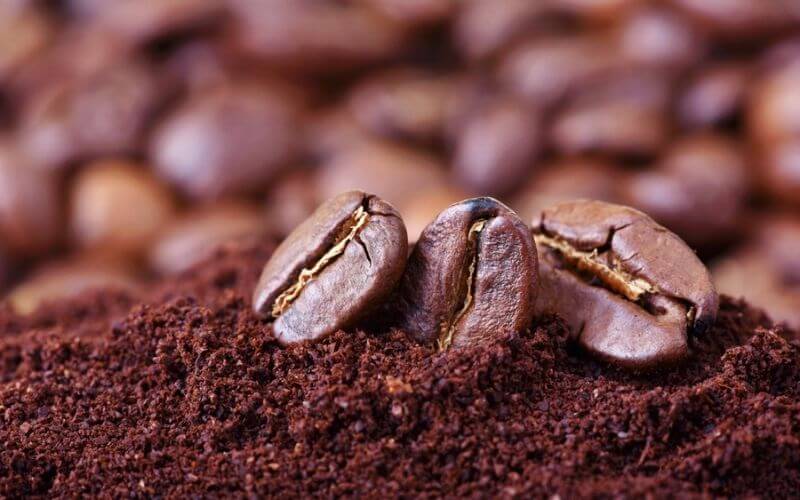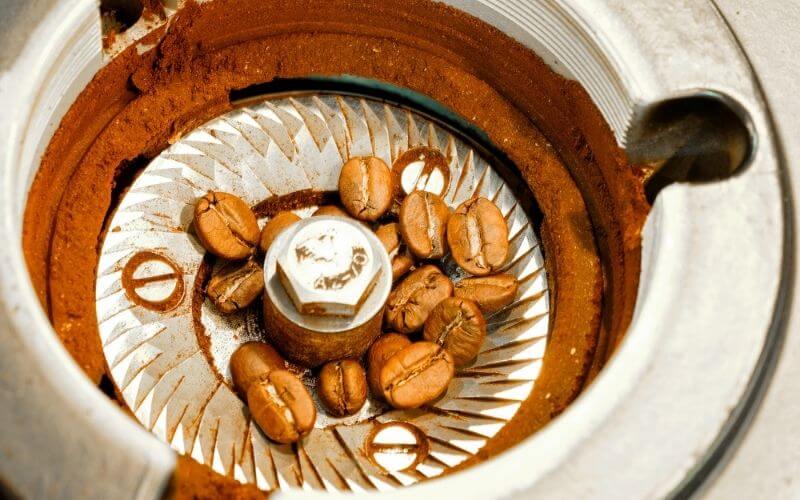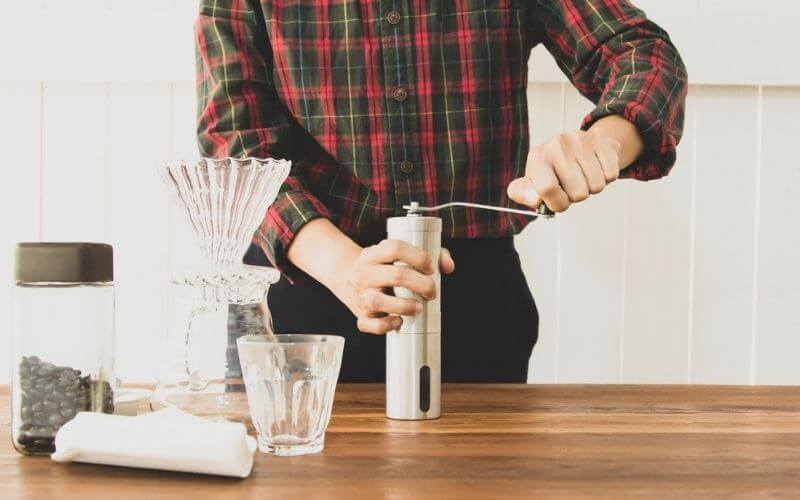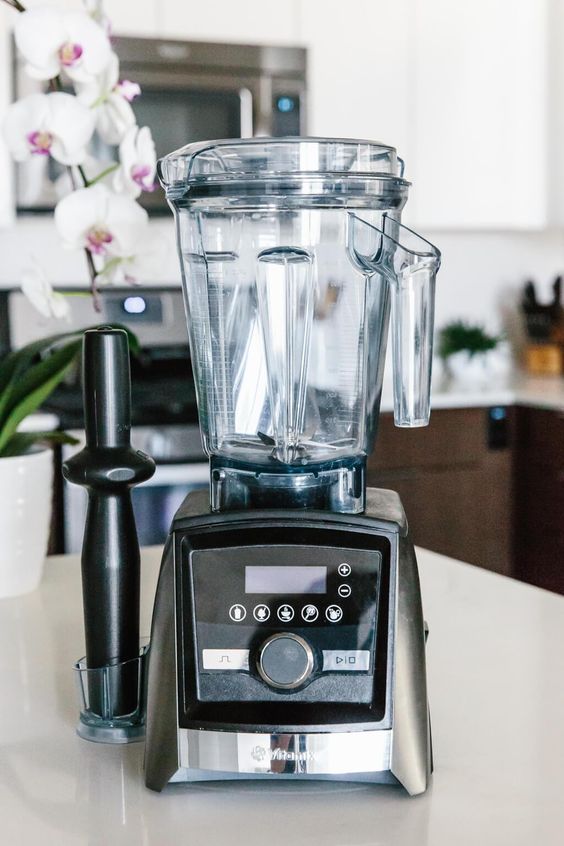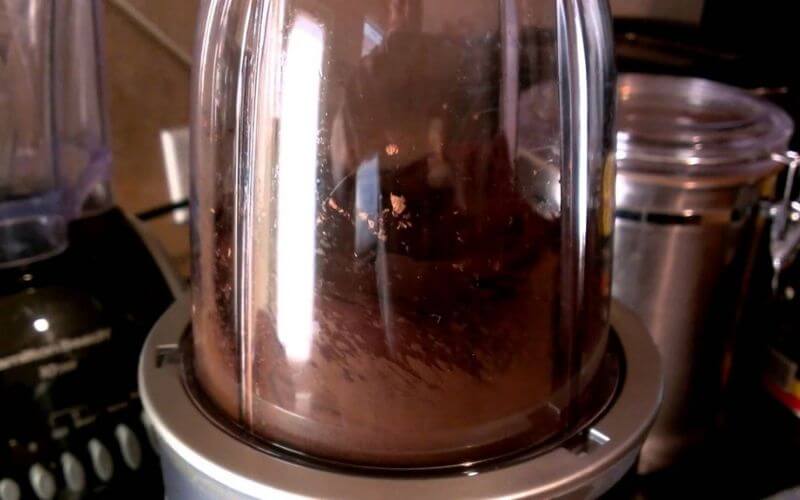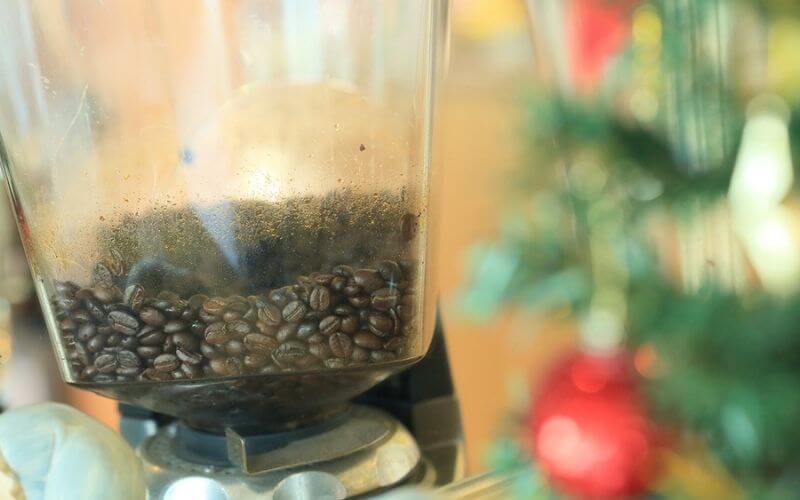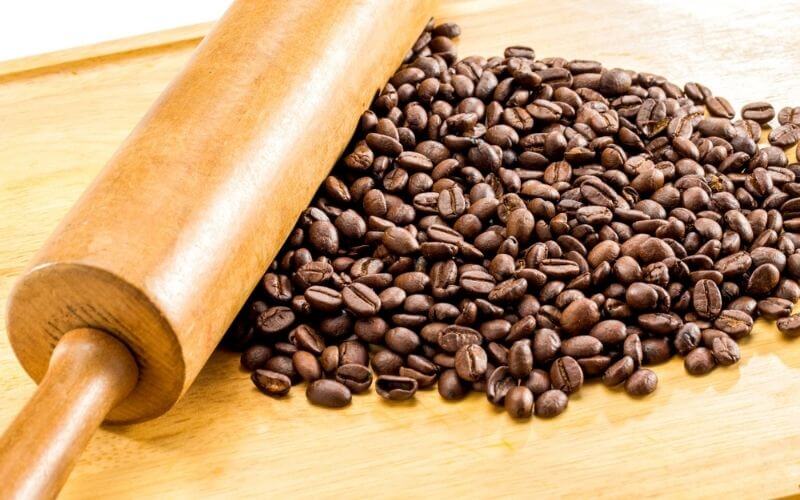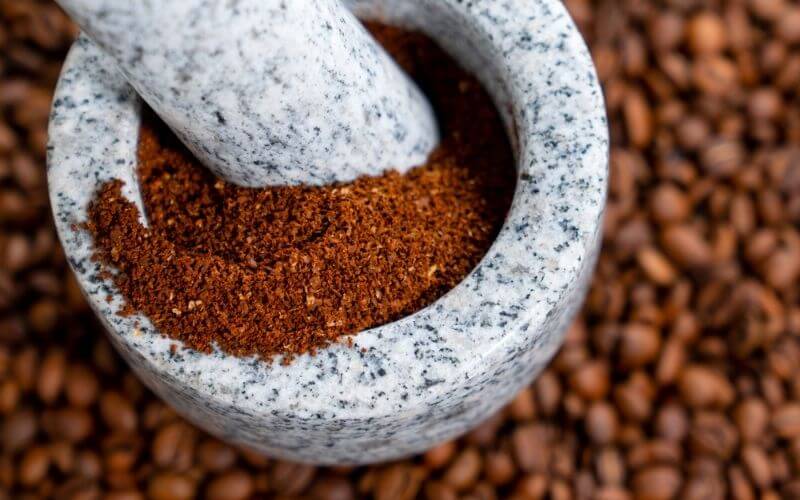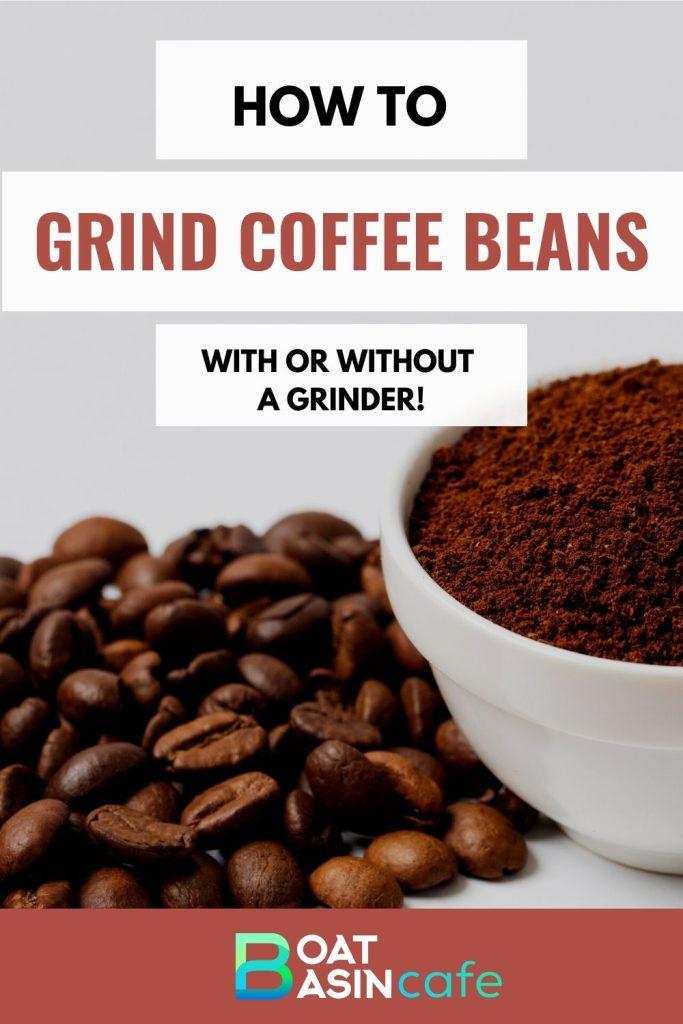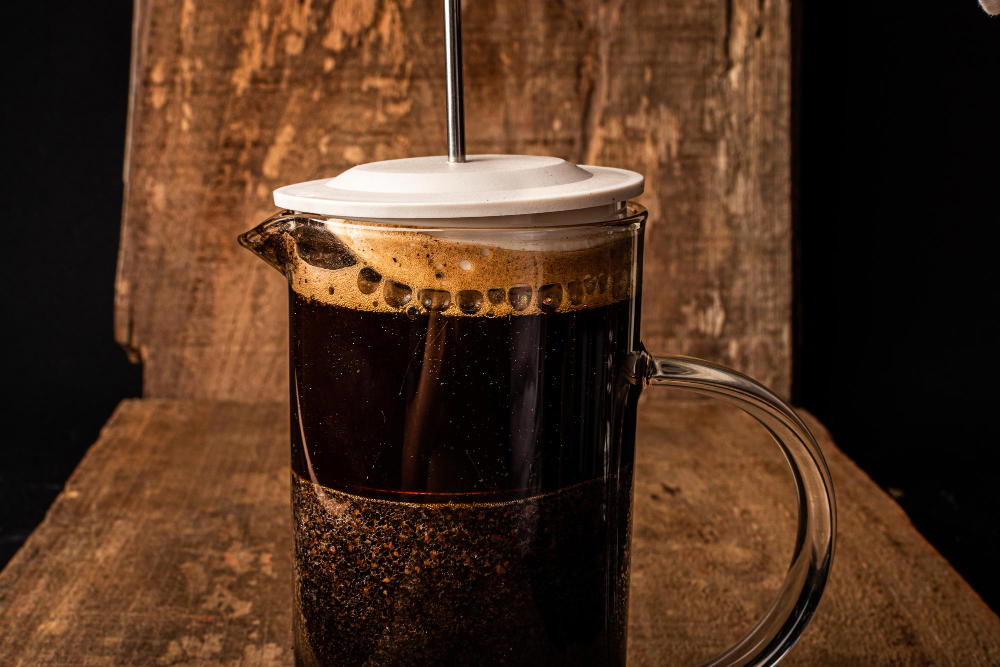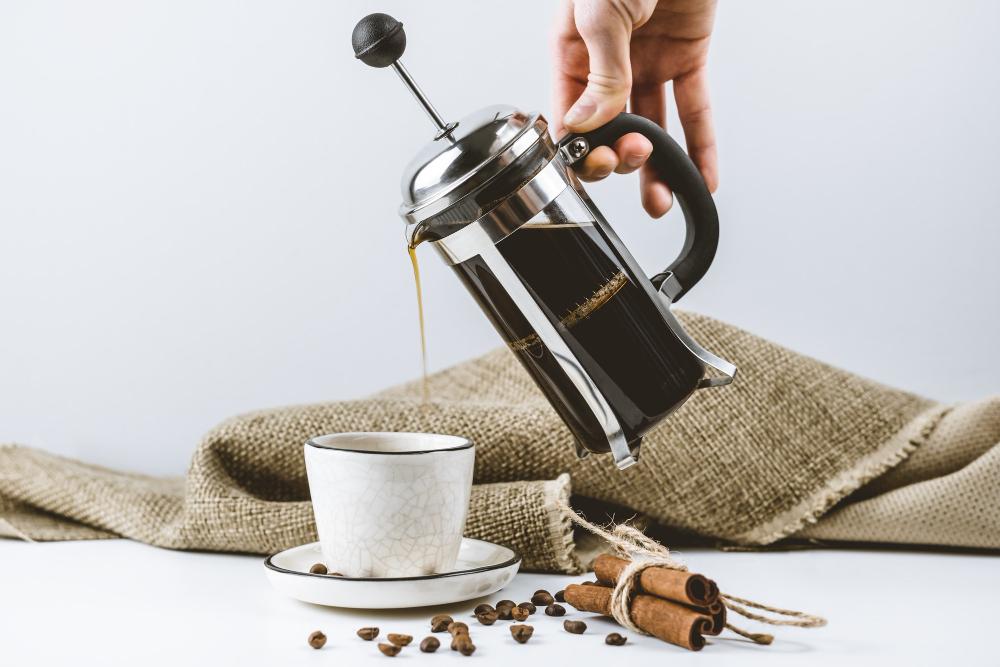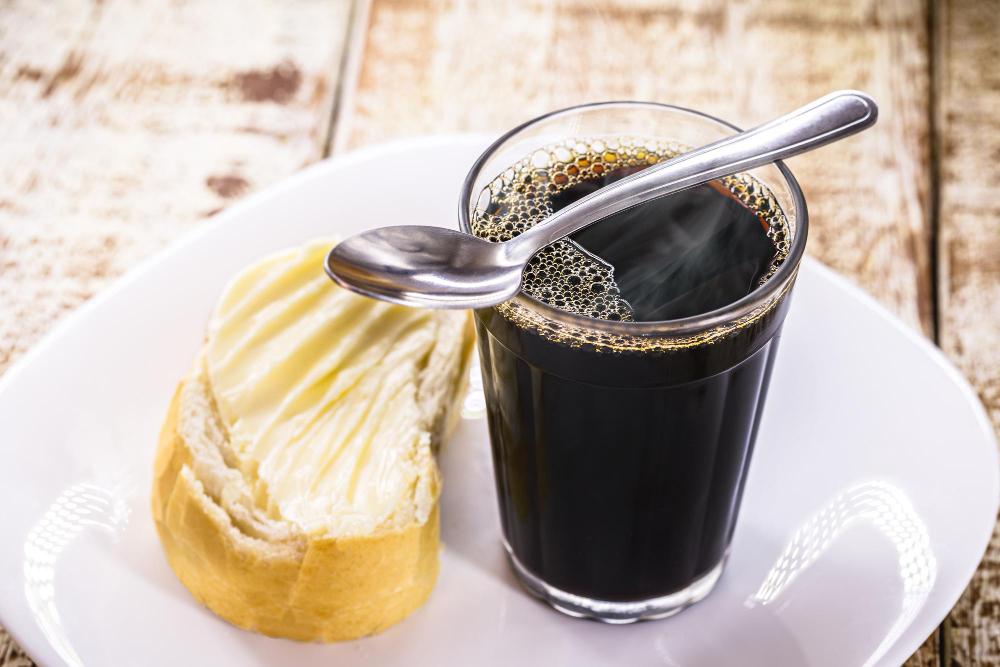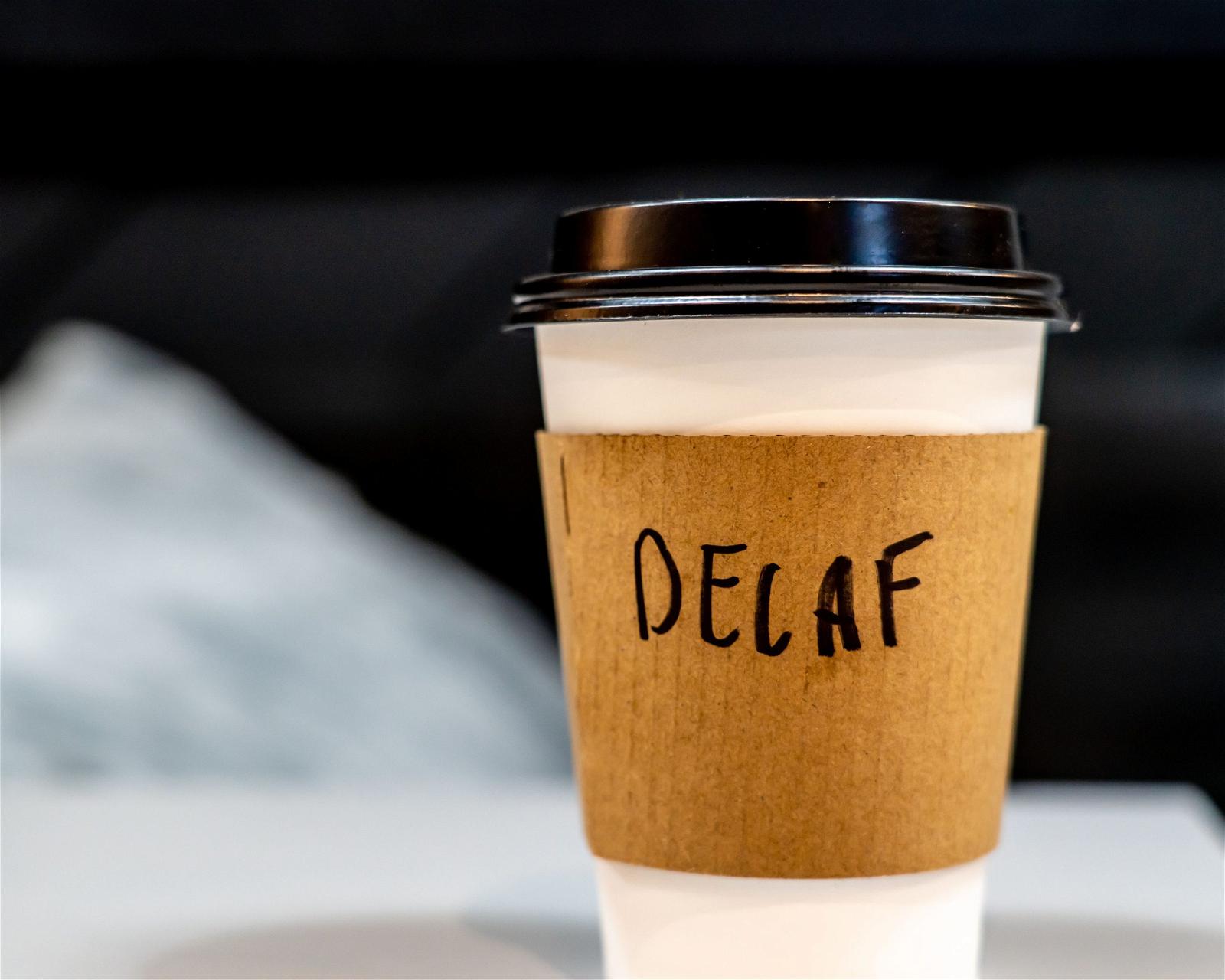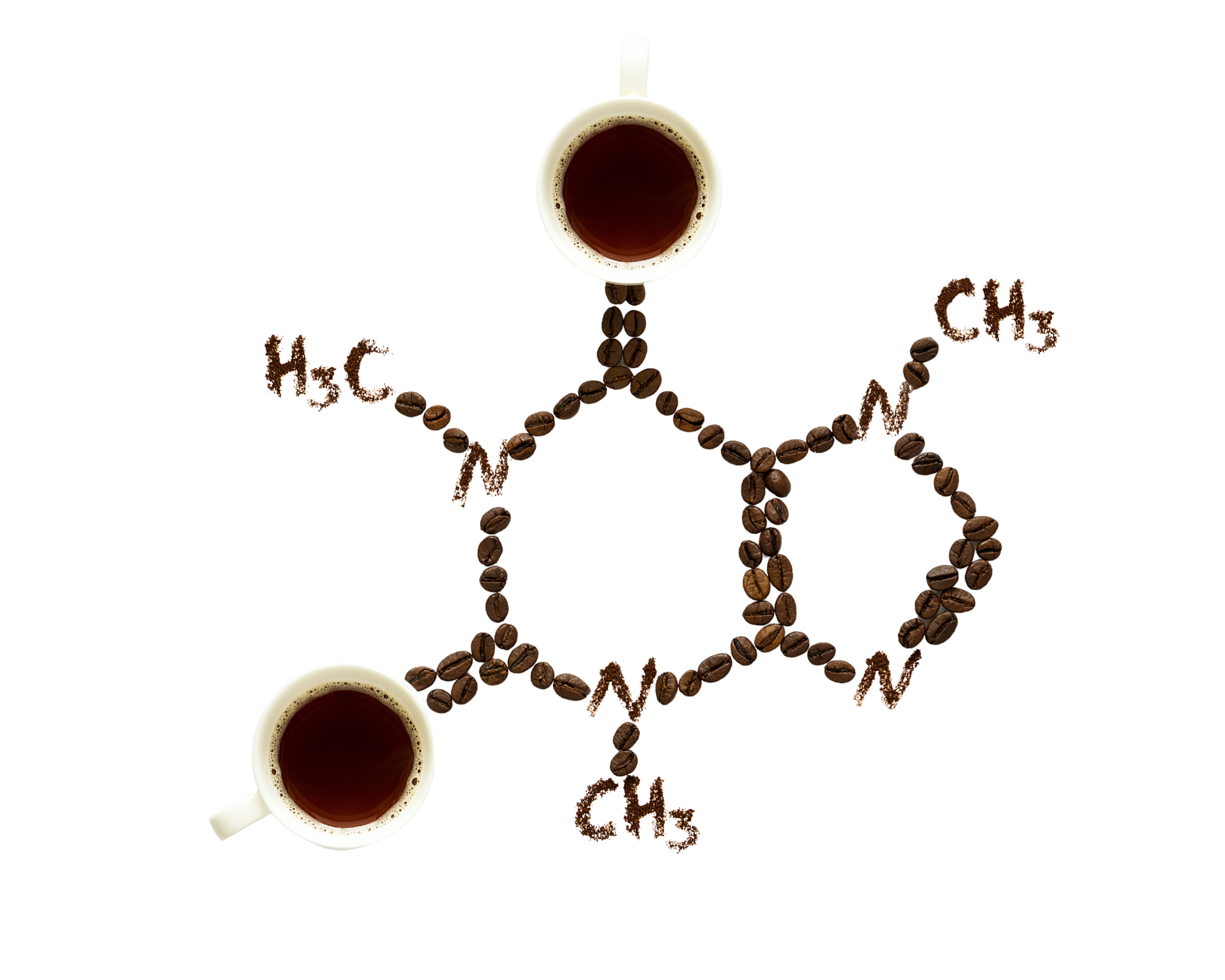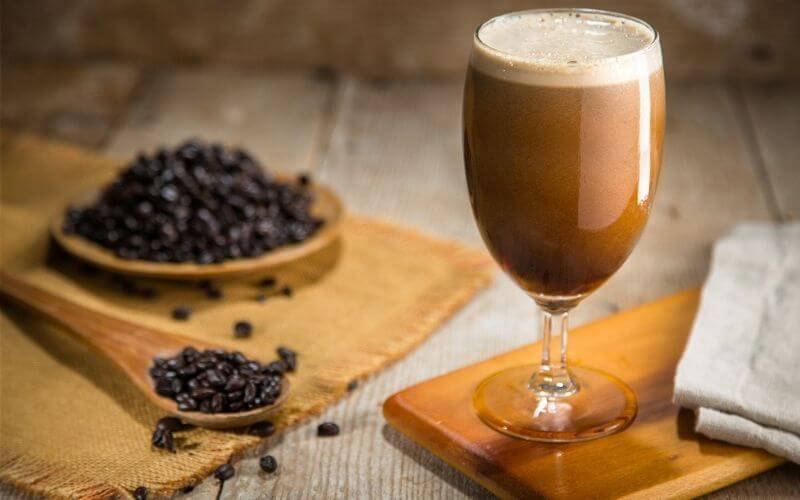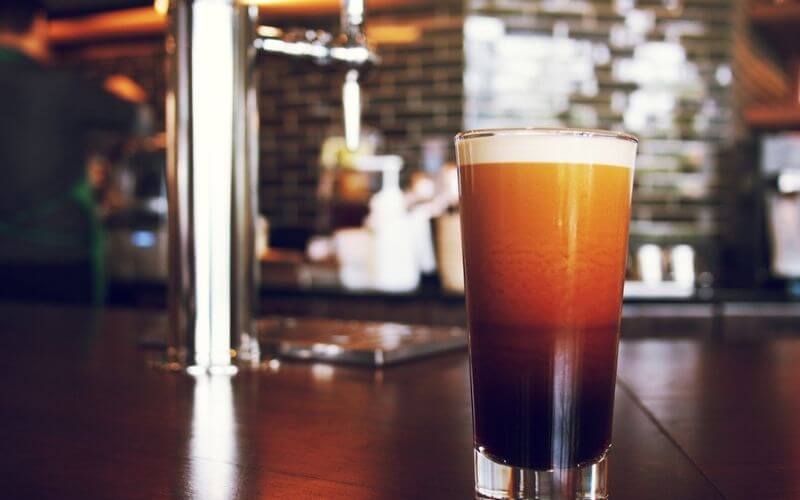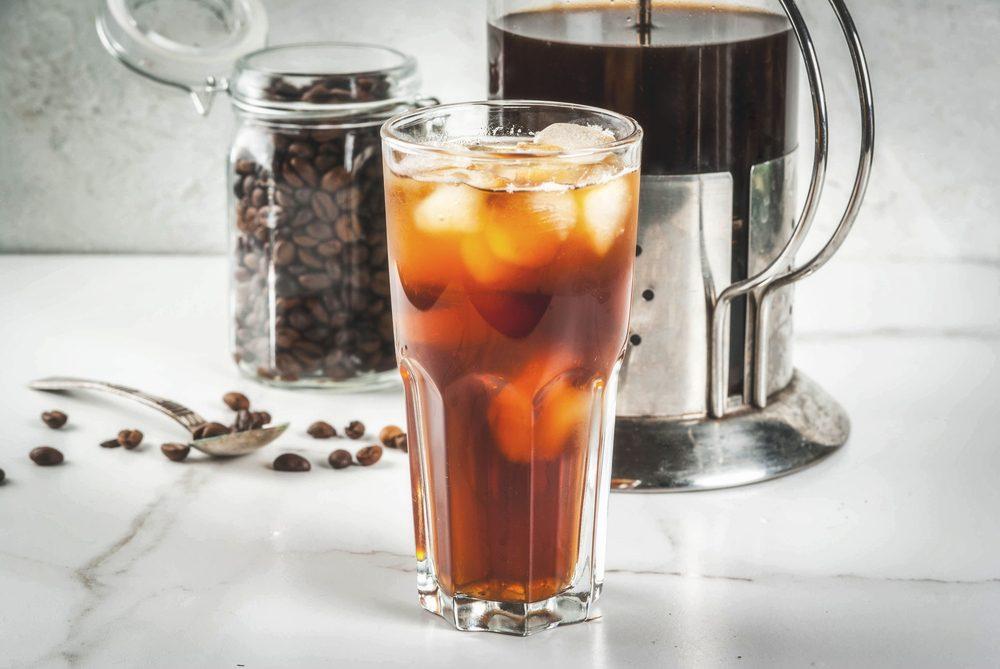Find out Starbucks low caffeine drinks as well as those with zero caffeine so that you don’t get off track if you’re planning to cut down on caffeine intake.

Starbucks is one of the most popular coffee chains in the world. They have over 32,000 locations worldwide and are known for its high-quality coffee. But did you know that Starbucks offers a low caffeine option?
Sometimes we can’t handle excess coffee because the caffeine content in it gives us jitters, anxiety, headaches, insomnia, or a host of other conditions.
Caffeine is also known to interact with certain medicines so if you’re on any of these medications, drink coffee and tea with caution.
Whether you need a coffee break or want to reduce the amount of caffeine, these drinks are for you.
You may also like: The List of Caffeine Free Starbucks Drinks
Starbucks Low Caffeine Drinks
| No. | Starbucks Low Caffeine Drinks | Caffeine in mg |
| 1 | Mint Majesty | 0 |
| 2 | Peach Tranquility | 0 |
| 3 | White Hot Chocolate | 0 |
| 4 | Toasted White Hot Chocolate | 0 |
| 5 | Peppermint White Hot Chocolate | 0 |
| 6 | Steamed milk | 0 |
| 7 | Pistachio Crème | 0 |
| 8 | Emperor’s Clouds & Mist | 16 |
| 9 | Eggnog Crème | 0 |
| 10 | Caramel Brulee Crème | 0 |
| 11 | Cinnamon Dolce Crème | Not available |
| 12 | Vanilla Crème | 0 |
| 13 | Caramel Apple Spice | 0 |
| 14 | Steamed Apple Juice | 0 |
| 15 | Iced Passion Tango Tea | 0 |
| 16 | Iced Passion Tango Tea Lemonade | 0 |
| 17 | Iced Guava Passionfruit Drink | 0 |
| 18 | Lemonade | 0 |
| 19 | Blended Strawberry Lemonade | 0 |
| 20 | Vanilla Bean Crème Frappuccino | 0 |
| 21 | Caramel Ribbon Crunch Crème Frappuccino | 0 |
| 22 | Chai Crème Frappuccino | 40 |
| 23 | Chocolate Cookie Crumble Creme Frappuccino | 15 |
| 24 | Strawberry Funnel Cake Creme Frappuccino | 0 |
| 25 | White Chocolate Creme Frappuccino | 0 |
| 26 | Starbucks Pink Drink | 45 |
| 27 | Teavana Sparkling Unsweetened Peach Nectarine Green Tea | 16 |
| 28 | Organic Smoothies | 0 |
| 29 | Horizon Organic Milk | 0 |
| 30 | Tree Top Apple Juice | 0 |
01. Mint Majesty
The Mint Majesty is a delectable option for a hot, caffeine-free beverage at Starbucks. This herbal tea is caffeine-free with a hint of lemon verbena and mint. Don’t confuse it with Jade Citrus Mint, another minty tea from Starbucks, those contains caffeine as they’re made with green tea.
Caffeine content: 0 mg
02. Peach Tranquility
This herbal tea is caffeine-free and includes peach, candied pineapple, rose hips, chamomile flowers, and lemon verbena.
It really is as mouthwatering as it sounds and is a bouquet of fresh flavors!
Caffeine content: 0 mg
03. White Hot Chocolate
Winter days and a warm cup of hot chocolate go together like peaches and cream.
What if you’re trying to avoid caffeine?
Starbucks offers a White Hot Chocolate remedy.
This is a twist on the traditional hot chocolate and it’s a rich concoction of steamed milk, white chocolate sauce, and whipped cream.
Caffeine content: 0 mg
04. Toasted White Hot Chocolate
What do you get when you combine caramelized white chocolate and steamed milk?
A standard cup of hot chocolate boosted to a whole new level!
Whipped cream, sugar sparkles, and white pearls are used to decorate this wintertime favorite without loading in on the caffeine, making it one of the more popular caffeine free Starbucks drinks.
Caffeine content: 0 mg
05. Peppermint White Hot Chocolate
The peppermint white hot chocolate is the ultimate winter favorite for many like me.
This seasonal classic is created with steamed milk, peppermint-flavored syrup, and white chocolate mocha sauce.
The sweetened whipped cream and dark chocolate curl toppings uplift the overall decadence of this warmer.
Caffeine content: 0 mg
06. Steamed milk
Starbucks’s plain Milk Steamer is just a warm, naturally caffeine-free cup of milk.
You can pick from whole, skim, 2%, almond, soy, almond, coconut, or oat milk.
Caffeine content: 0 mg
07. Pistachio Crème
Add any flavored and sweet syrups to a simple milk steamer to give it the flavor and taste you’re craving for.
The warm pistachio and luscious brown butter tastes can turn plain old milk steamer into a drink fit for royalty.
Caffeine content: 0 mg
08. Emperor’s Clouds & Mist
At only 16 mg caffeine content, you’ll like this mildly smokey, subtly sweet green tea that is grown at 3,500 feet in the air and wrapped in mystical clouds and mist.
Every sip you take will transport you to a calm, hilly atmosphere.
Caffeine content: 16 mg
09. Eggnog Crème
Steamed eggnog is combined with plain steamed milk and dusted off with nutmeg as a topping to give you the full feeling of all things wintery and Christmassy.
This could be one of the non-coffee drinks for you that’s full of flavor and warmth.
Caffeine content: 0 mg
10. Caramel Brulee Crème
A sweet caramel brulee sauce is added to the milk steamer and topped off with whipped cream and caramel brulee toppings to create this low-caffeine drink at Starbucks to give you warmth without the caffeine shot.
Caffeine content: 0 mg
11. Cinnamon Dolce Crème
Cinnamon dolce syrup is a popular choice in many drinks at Starbucks.
You can now ask for it to be added to a simple milk steamer for a low-caffeine option that will provide the full blast of the season’s flavors with its cinnamon dolce topping and whipped cream.
Caffeine content: Not available
12. Vanilla Crème
Another caffeine-free Starbucks drink is the simple vanilla crème steamer.
Simply a combination of the milk steamer and vanilla syrup, this is a classic that never goes out of season.
Caffeine content: 0 mg
13. Caramel Apple Spice
Another hot favorite drink in the season of mists and mellow fruitfulness is the caramel apple spice.
It combines steamed apple juice with cinnamon syrup, a drizzle of caramel sauce, and whipped cream – a concoction that Fall is not complete without.
Caffeine content: 0 mg
14. Steamed Apple Juice
To make this Starbucks low caffeine drink, 100% pure steamed apple juice is used, not any concentrate.
This hot drink with the apple sweetness is a great beverage to start your day on the right note.
Caffeine content: 0 mg
15. Iced Passion Tango Tea
Did you know that iced passion tango tea is one of the few tea drinks at Starbucks without any caffeine?
This cold drink is a herbal blend of apple, hibiscus, and lemon tea that’s shaken with ice.
At zero caffeine, this could be your go-to drink on a hot summer afternoon.
Caffeine content: 0 mg
16. Iced Passion Tango Tea Lemonade
Shake it up with passion tango tea lemonade to give this iced drink the refreshing, citrusy flavors of summer.
Instead of lemonade, bring taste variations by adding other caffeine-free juices like apple, guava, or peach to make it one of Starbucks no caffeine drinks.
Caffeine content: 0 mg
17. Iced Guava Passionfruit Drink
Another favorite in the cruel, cruel summers, the iced guava passionfruit drink is made from ginger, guava juice, pineapple, coconut milk, and ice that’s hand shaken to perfection.
The iced guava passionfruit drink is a refreshing drink with a unique flavor and tastes even better than regular iced coffee.
Caffeine content: 0 mg
18. Lemonade
We often forget that sometimes one of the simplest Starbucks drinks that quench our thirst without adding any caffeine is a plain iced shaken lemonade.
To balance out the tanginess, you can sweeten it up with a couple of pumps of raspberry syrup and make it a berrylicious summer soother!
Caffeine content: 0 mg
19. Blended Strawberry Lemonade
A sure hit among kids and adults alike, the blended strawberry lemonade is a slush made with strawberry, lemonade, and ice.
The tangy taste of the lemonade meets the color and flavors of strawberries to make a merry match for the oh-so-hot summers!
Caffeine content: 0 mg
20. Vanilla Bean Crème Frappuccino
One of the popular Starbucks drinks, there’s nothing not to love about this cold creamy drink that drowns you in a sea of vanilla.
Made with vanilla bean, milk, and ice, the vanilla bean crème frappuccino is topped with whipped cream, making this caffeine-free drink an all-time favorite for me.
Caffeine content: 0 mg
21. Caramel Ribbon Crunch Crème Frappuccino
Now, this is one of Starbucks drinks at 85 mg of caffeine in a Grande size. Keep this drink for one of those days when you want to treat yourself.
Blended with coffee, buttery caramel syrup, ice, and milk, the topping consists of whipped cream, caramel syrup, caramel drizzle, and crunchy sugar caramel.
Wow! That’s a whole lot of caramel in a single drink!
Caffeine content: 0 mg
22. Chai Crème Frappuccino
Chai is a drink for any time of the day or any season.
The Grande chai crème frappuccino is a Starbucks low caffeine drink as it has 40 mg of caffeine.
This refreshing drink is made by blending spicy classic chai with ice and milk. The topping includes sweet whipped cream with a sprinkling of cinnamon to give you just enough spice without the heat.
Caffeine content: 40 mg
23. Chocolate Cookie Crumble Crème Frappuccino
When it’s hard to choose between a low-caffeine coffee and chocolate drink, get the best of both worlds with this chocolate cookie crumble crème frappuccino.
Milk and ice are blended with Frappuccino chips and mocha sauce.
Layers are created with vanilla whipped cream, chocolate cookie crumble, and mocha drizzle to serve up this sensational drink.
The icing on the cake (or the drink, so to speak) is that it has only 15 mg of caffeine in a Grande size.
Caffeine content: 15 mg
24. Strawberry Funnel Cake Frappuccino Crème
This is more desert than a drink with a blend of milk, ice, and funnel cake-flavored crème frappuccino syrup.
Instead of whole milk or 2% milk, you can choose a non-dairy alternative like almond or coconut milk.
Layered toppings of whipped cream, powdered sugar funnel cake crumble, and a final touch of strawberry puree make this frappuccino a special drink that comes with zero caffeine.
Caffeine content: 0 mg
25. White Chocolate Crème Frappuccino
White chocolate sauce, milk, and ice are blended into an exquisite flavor and topped with white clouds of whipped cream to give you a beverage with subtle chocolate flavors.
What’s more, the caffeine-free white chocolate crème frappuccino is a great way to satisfy your sweet tooth.
Caffeine content: 0 mg
26. Starbucks Pink Drink
With 45 mg of caffeine in the Grande size, the Pink Drink is one of the low-caffeine Starbucks drinks you can order from the menu.
This drink combines the strawberry acai refreshers beverage with coconut milk to give a glassful of strawberry, passionfruit, and acai accents to bring a spring to your step any time of the day!
Caffeine content: 45 mg
27. Unsweetened Peach Nectarine Green Tea Peach Nectarine Green Tea
The goodness of green tea meets the natural sweetness and flavor of peach and nectarine to give you a cooling drink that has only 16 mg of caffeine.
The unsweetened drink is a healthy option for those who want to cut down on sugar and carbs, making it a keto-friendly drink as well as a low-caffeine drink at 16 mg of caffeine in a 14.5 fluid-ounce a bottle.
Caffeine content: 16 mg
28. Organic Smoothies
Evolution Fresh Organic Smoothies can be found in the refrigerated section of Starbucks. These smoothies are not caffeinated and come in three variants – Defense Up, Vital Berry, and Super Fruit Greens.
Caffeine content: 0 mg
29. Horizon Organic Milk
Low-fat, vanilla, and chocolate organic milk in juice box types of cartons are available at Starbucks so that you don’t need to think too much about which drink has the least amount of caffeine.
Caffeine content: 0 mg
30. Tree Top Apple Juice
Not in the mood for sparkling or plain water or organic milk or smoothie? Then, go for the juice box-style apple juice from the refrigerated section at Starbucks to quench your thirst without giving you any caffeine kick.
Caffeine content: 0 mg
Nutritional value of low-caffeine drinks
Low-caffeine drinks can provide important nutritional value, depending on the type of drink you choose. For example, a plain cup of brewed coffee is low in calories and provides a small amount of potassium, magnesium, and niacin.
Adding milk or a non-dairy milk alternative to your coffee can also add important nutrients such as calcium, vitamin D, and vitamin B12. However, it’s important to be mindful of any added sugars or syrups that can increase the calorie content of your drink.
| Drink Type | Calories | Potassium | Magnesium | Niacin | Other Nutrients |
|---|---|---|---|---|---|
| Brewed Coffee | 0-5 calories | 116 mg per 8 oz | 7 mg per 8 oz | 0.5 mg per 8 oz | Small amounts of calcium, phosphorus, and folate |
| Cappuccino | 70-120 calories | Varies depending on milk type | Varies depending on milk type | Varies depending on milk type | Small amounts of calcium, vitamin D, and vitamin B12 |
| Tea | Varies depending on type and additives | Varies depending on type | Varies depending on type | Varies depending on type | Varies depending on type and additives |
| Fruit-infused water | 0 calories | Varies depending on fruit | Varies depending on fruit | Varies depending on fruit | Small amounts of vitamin C and other nutrients depending on fruit added |
| Non-dairy milk latte | Varies depending on type of milk and added syrups | Varies depending on type of milk | Varies depending on type of milk | Varies depending on type of milk | Small amounts of calcium, vitamin D, and vitamin B12 depending on type of milk |
Health benefits of low-caffeine drinks
Improved sleep
High caffeine consumption can interfere with sleep patterns, leading to insomnia and other sleep disorders. Choosing low-caffeine drinks can help improve sleep quality and quantity, which can have a positive impact on overall health.
Reduced anxiety
Caffeine is known to increase anxiety levels in some people. Choosing low-caffeine drinks can help reduce anxiety symptoms and promote a sense of calmness and relaxation.
Lower risk of cardiovascular disease
High caffeine consumption has been linked to an increased risk of cardiovascular disease. Choosing low-caffeine drinks can help reduce this risk and promote better heart health.
Lower risk of type 2 diabetes
High caffeine consumption has also been linked to an increased risk of type 2 diabetes. Choosing low-caffeine drinks can help reduce this risk and promote better blood sugar control.
Hydration
Many low-caffeine drinks, such as herbal teas and fruit-infused water, can help keep the body hydrated. This is important for maintaining overall health and well-being.
How Much Is Too Much Caffeine?
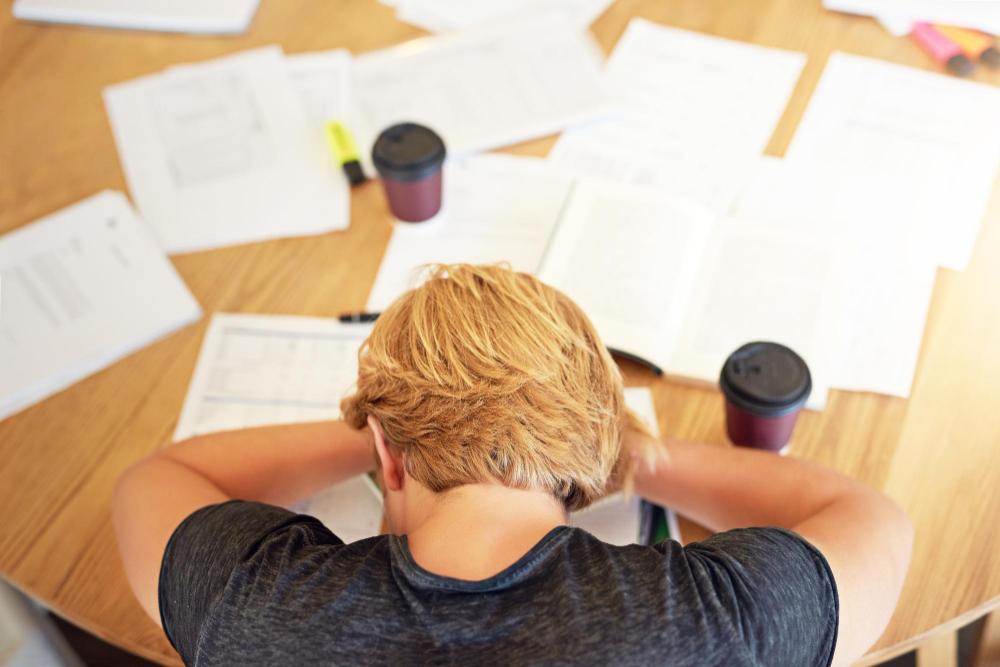
Most of us crave for a caffeine shot to kickstart the day and keep us going without feeling drained.
Although many people like me drown cups of coffee to go through a hectic day, anything in excess is bad for your health, including the caffeine content in coffee and tea.
Let’s find out how much caffeine input is daily allowed without going OTT.
Adults should not exceed 400 mg of caffeine daily. That means, if you’re an adult, you should confine yourself to four cups of 8-ounce mugs of coffee per day.
The caffeine intake for teenagers should be even lower – ¼th of those for adults. That means only one cup of an 8-ounce coffee per day or 100 mg of caffeine.
And if you’re on medication or pregnant or have insomnia or other health conditions, then caffeine should be drastically cut down from your diet.
Potential side effects of low-caffeine drinks
While low-caffeine drinks are generally considered safe and healthy, they can still have potential side effects for some people. These can include:
Headaches
Some people may experience headaches or migraines when they consume low-caffeine drinks, especially if they are used to consuming high levels of caffeine.
Fatigue
Low-caffeine drinks may not provide the same energy boost as high-caffeine drinks, which can lead to feelings of fatigue or sluggishness.
Addiction
While low-caffeine drinks are generally considered to be less addictive than high-caffeine drinks, they can still be habit-forming for some people.
Caffeine Scale In Various Drinks And Foods
It’s not only in coffee that we have caffeine. Some of our favorite drinks and foods also contain caffeine like tea, sodas, energy drinks, and chocolate.
Let’s see how much caffeine content is there in each.
| No. | Dinks and foods | Caffeine in mg |
| 1 | Brewed coffee (8 ounces) | 95 |
| 2 | Instant coffee (8 ounces) | 60 |
| 3 | Espresso (1.5 ounces) | 65 |
| 4 | Green tea (1 cup) | 28 |
| 5 | Black tea (1 cup) | 47 |
| 6 | Decaf tea (1 cup) | 2 |
| 7 | Herbal tea | 0 |
| 8 | Dark cola (12-ounce) | 40 |
| 9 | Mountain Dew (12-ounce) | 55 |
| 10 | Milk chocolate (1 ounce) | 6 |
| 11 | Dark chocolate (1 ounce) | 24 |
| 12 | Energy drinks (16-ounce) | 170 |
| 13 | Energy shots (2 ounces) | 200 |
| 14 | Caffeine supplements (per tablet) | 200 |
01. Coffee – Brewed, Decaf, and Instant
8 ounces of brewed coffee has 95 mg of caffeine while the same amount of decaf coffee has 4mg and instant coffee has 60 mg of caffeine.
02. Espresso
A shot of espresso is about 1.5 ounces and contains 65 mg of caffeine.
03. Tea
While herbal teas are caffeine-free like these tea bags from Bigelow, a cup of green tea has 28 mg of caffeine. Black tea has the highest caffeine content at 47 mg, while Lipton’s decaf black tea has 2 mg of caffeine
04. Soda
Both regular and diet types of cola contain 40 mg of caffeine in a 12-ounce can. The same size of a can of Mountain Dew contains more caffeine, 55 mg.
05. Chocolate
Milk chocolate has 6 mg of caffeine in one ounce while dark chocolate has 24 mg of caffeine in the same amount.
06. Energy Drinks
Energy drinks like Monster comes in in 16-ounce can sizes and each can has 170 mg of caffeine.
07. Energy Shots
Energy shots are concentrated forms of energy drinks and pack in 200 mg of caffeine in a 2-ounce shot.
08. Caffeine Supplements
Besides the above, some people also consume caffeine supplements like these from Nutricost. These supplements contain 200 mg of caffeine per tablet.
08. Guarana
There is also a seed called guarana that is native to plant from South America.
These guarana seeds are processed and added to energy supplements, foods, and energy drinks.
The guarana seeds have 4X more caffeine than can be found in coffee beans.
Drinks containing guarana seed extracts may have as much as 125 mg of caffeine in a single serving.
How to make low-caffeine drinks at home
Making low-caffeine drinks at home is a great way to enjoy your favorite drinks without the high caffeine content.
Here are some tips on how to make low-caffeine drinks at home, as well as some alternatives to Starbucks’ low-caffeine drinks:
- Choose decaf coffee: Decaf coffee is a great way to enjoy the taste of coffee without the high caffeine content. You can easily find decaf coffee at your local grocery store or online.
- Use herbal tea: Herbal tea is naturally caffeine-free and comes in a wide variety of flavors. You can brew herbal tea hot or cold and add your favorite sweetener or milk alternative.
- Experiment with non-dairy milk alternatives: Non-dairy milk alternatives such as almond milk, oat milk, and soy milk are low in caffeine and can be used in a variety of drinks. You can use them in lattes, cappuccinos, and other coffee-based drinks.
- Try fruit-infused water: Fruit-infused water is a great way to stay hydrated and enjoy a refreshing drink without the high caffeine content. You can infuse water with your favorite fruits such as strawberries, lemon, or cucumber.
- Make your own frappuccinos: You can easily make your own frappuccinos at home by blending together ice, milk or a milk alternative, and your favorite flavorings such as chocolate syrup or vanilla extract. You can also add a shot of decaf espresso for a slight coffee flavor.
Alternatives to Starbucks’ low-caffeine drinks
Dunkin’ Donuts
Dunkin’ Donuts offers a wide range of low-caffeine drinks, including decaf coffee, herbal tea, and fruit-infused water.
Peet’s Coffee
Peet’s Coffee offers a variety of low-caffeine drinks, including decaf coffee, herbal tea, and fruit-infused water.
Tim Hortons
Tim Hortons offers a range of low-caffeine drinks, including decaf coffee, herbal tea, and fruit smoothies.
Caribou Coffee
Caribou Coffee offers a variety of low-caffeine drinks, including decaf coffee, herbal tea, and fruit-infused water.
DIY
As mentioned above, making low-caffeine drinks at home is a great alternative to buying drinks from a coffee shop. With a few simple ingredients, you can make your own low-caffeine drinks that are just as tasty as those from your favorite coffee shop.
Final Thoughts
Remember that coffee, tea, and chocolate have caffeine.
So, if you want to order a Starbucks low-caffeine drink, look for drinks that don’t contain the above ingredients.
However, you won’t find any caffeine content in iced passion tango tea and iced passion tango tea lemonade.
Other safe choices are milk, water, fruit juices, and fruit blends with ice and milk.
FAQs
Which Starbucks Coffee Has The Least Caffeine?
Decaf Pike Place Roast has the least caffeine at 25mg per Grande cup.
In caffeinated coffee, espresso and cappuccino have the least caffeine at 75mg.
From the cold coffees selection, the coffee w
What Starbucks Drink Has The Lowest Caffeine?
Among the range of Starbucks blended frappuccinos, white chocolate crème frappuccino, vanilla bean crème frappuccino, and caramel ribbon crunch crème Frappuccino have the least caffeine at 0 mg per Grande cup.
White hot chocolate, steamed apple juice, caramel apple spice, steamed milk, vanilla creme steamer, sparkling water, bottled water, organic milk, organic juices at Starbucks are also caffeine-free drinks.
